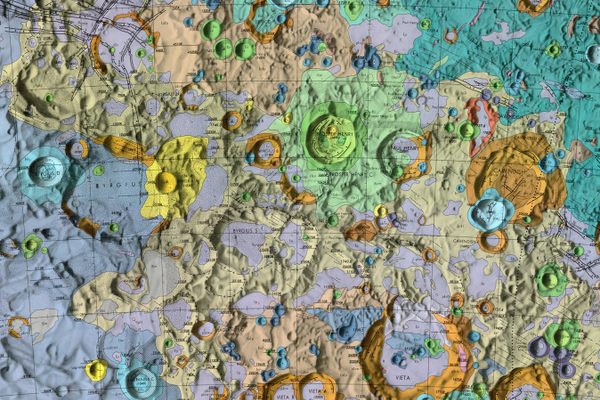This 17th Century Map of the Skies is Bursting With Mythological Creatures
Feast your eyes on a stunning, hand-illustrated star chart from 1670.
This stunning map of the skies is the work of Frederik de Wit, a Dutch cartographer from the 17th century. (Photo: Frederik de Wit/Public Domain)

From time immemorial, humans have turned their gaze upward to the heavens in an attempt to make sense of the stars. Since the 14th century our way of mapping the patterns we see in the night sky has been to create constellations–88 of them, in fact, named after mythological figures or the shapes they seem to take. These constellations often ended up on star charts, which were not just objects of great beauty, but navigational and study tools, too.
The above star chart is from 17th-century Amsterdam, and was created by artist and cartographer Frederik de Wit in the year 1670. As you can see, the celestial map shows solar orbits and the lunar phases in addition to mapping and stunningly illustrating the constellations visible from earth.
The careful attention to detail given to the main star chart carries onto the borders of the map, which feature cross-hatched blue clouds and lettered pink scrolls. It is in the main star chart, however, that the details become a little more bizarre. Notice the upside-down puppy dog in the middle of the skies, the large horse with rainbow wings, and the strange creature in the upper right that appears to be half mammal, half fish.

The mythological stallion is usually depicted as entirely white, but de Wit’s map portrays him with rainbow-colored wings.
This beautifully-rendered horse with rainbow wings in the upper left of the map is actually the mythical creature known as Pegasus. He is said to have created the fabled Hippocrene, a fountain on Mt. Olympus, by digging his hooves into the ground. The constellation named for the winged stallion was one of the 48 listed by Ptolemy in the 2nd century AD, and is one of the 88 we recognize today.

The imagery around this constellation originated the phrase, “Dog Days of summer.”
This upside-down canine depicts Sirius, the brightest star in the Earth’s night sky. It appears so bright because of its intrinsic luminosity, but also its relative closeness to our planet. Observations of Sirius date back to the earliest astronomical records in ancient Egypt, where it was known under the name Sopdet. The ancient Greeks noticed that the appearance of Sirius in the sky marked the beginning of summer, and the constellation is where we get the phrase, “dog days of summer.” Sirius is said to be chasing the nearby constellation Lepus, the hare.

The tale behind this monstrous oceanic figure is almost as gruesome as he.
In between Pisces and Aries stretches the figure of an enormous sea monster. Known as Cetus, this mammal-fish hybrid derives from Greek mythology. As the tale goes, the goddess Cassiopeia incurred the wrath of Poseidon, god of the seas, when she proclaimed that her daughter Andromeda was more beautiful than the sea nymphs known as the Nereids. A furious Poseidon sent the sea monster Cetus to attack, and to satisfy the beast Andromeda was tied to a rock on the sea. Perseus learned of this, and arrived in time to save Andromeda and slay the beast.
Map Monday highlights interesting and unusual cartographic pursuits from around the world and through time. Read more Map Monday posts.












Follow us on Twitter to get the latest on the world's hidden wonders.
Like us on Facebook to get the latest on the world's hidden wonders.
Follow us on Twitter Like us on Facebook